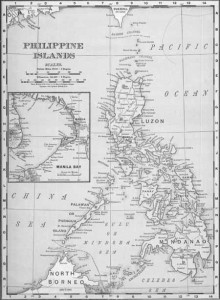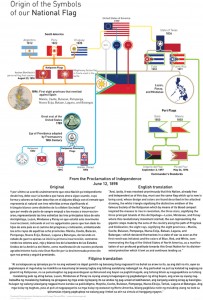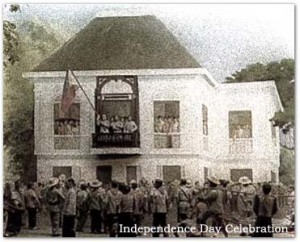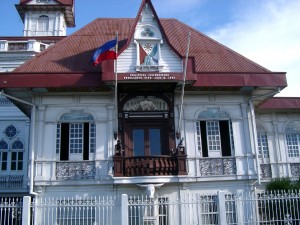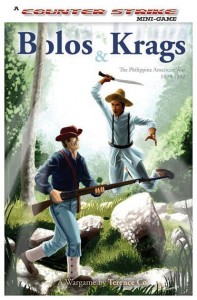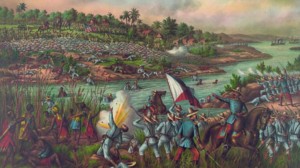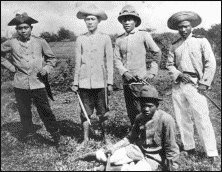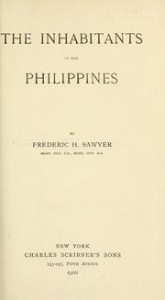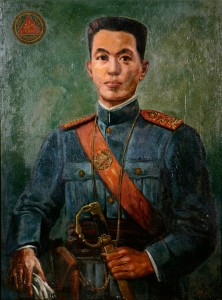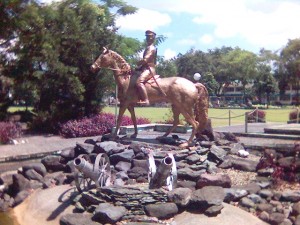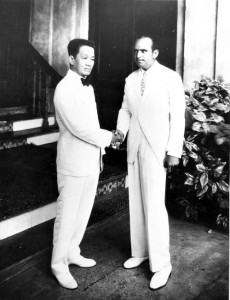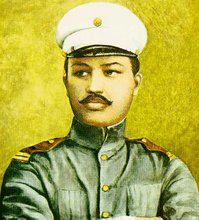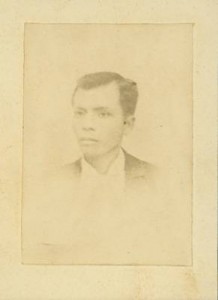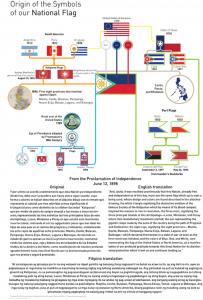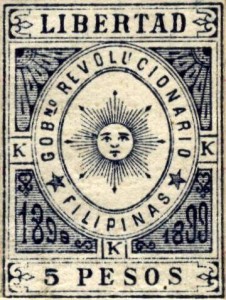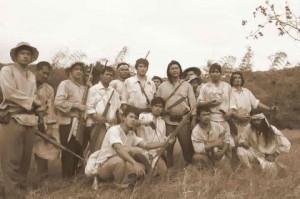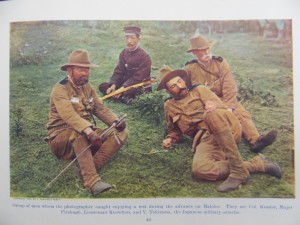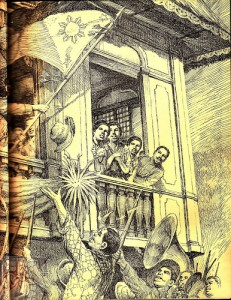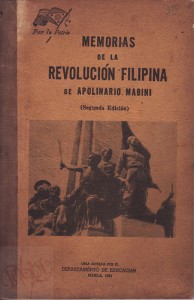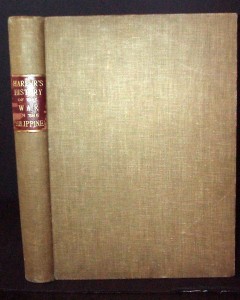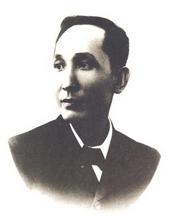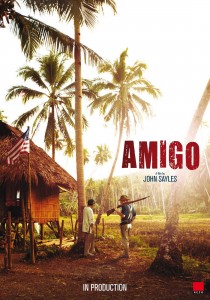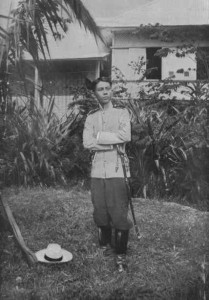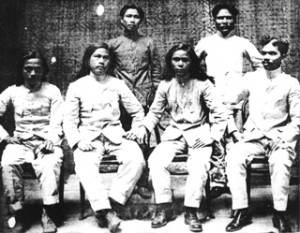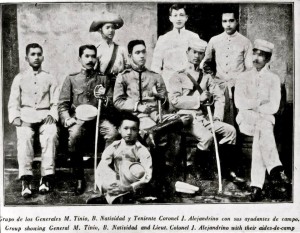
Photo: Members of "The Tinio Brigade". Anti American Resistance in the Ilocos Provinces, 1899-190. Staff: (to which Apolinario Querubin's Guerilla 4 belonged) seated L to R: Captain Yldefonso Villareal, Brig. Gen. Benito Natividad, Brig. Gen. Manuel Tinio, Lt. Col. Joaquin Alejandrino and Maj. Joaquin Buencamino(son of Felipe Buencamino, a minister in the Aguinaldo cabinet); Standing L to R: 2lt. Francisco Natividad and two unidentified officers; Seated: the 15 year-old officer 2Lt. Pastor Alejandrino. --------- Source: https://en.wikipedia.org/wiki/Manuel_Tinio Manuel Tinio y Bundoc (June 17, 1877 – February 22, 1924) was the youngest General[2] of the Philippine Revolutionary Army, and was elected Governor[3] of the Province of Nueva Ecija, Republic of the Philippines in 1907. He is one of the three Fathers of the Cry of Nueva Ecija along with Pantaleon Valmonte and Mariano Llanera. Manuel Tinio, then 18 years old, joined the Katipunan in April 1896. By August he had organized a company composed of friends, relatives and tenants. Personally leading his group of teenaged guerillas, he conducted raids and depredations against Spanish detachments and patrols in Nueva Ecija. Occasionally, he joined up with similar forces under other youthful leaders. An Early flag of the Katipunan. On September 2, 1896, Manuel Tinio and his men joined the combined forces of Mariano Llanera and Pantaleon Belmonte, capitanes municipales or mayors of Cabiao and Gapan, respectively, in the attack on San Isidro. Of 3,000 who volunteered, 500 determined men were chosen for the attack. Led by a bamboo orchestra or musikong bumbong of Cabiao, the force came in two separate columns from Cabiao and Gapan City and converged in Sitio Pulu, 5 km. from San Isidro. Despite the fact that they had only 100 rifles, they furiously fought the Spaniards holed up in the Casa Tribunal, the arsenal, other government buildings and in the houses of Spanish residents. Capt. Joaquin Machorro, commander of the Guardias Civiles, was killed on the first day of battle. According to Julio Tinio, Manuel's cousin and a participant in the battle, Manuel had a conference in the arsenal with Antonio Luna and Eduardo Llanera, the general's son, immediately after the battle. The Spanish authorities hastily organized a company of 200 civilian Spaniards and mercenaries the following day and attacked the overconfident insurgents, driving the besiegers away from the government center. The next day more Spanish reinforcements arrived from Peñaranda, forcing the poorly armed rebels to retreat, leaving behind 60 dead. The Spaniards went in hot pursuit of the insurgents, forcing those from Cabiao to flee to Candaba, Pampanga, and those from Gapan to hide in San Miguel de Mayumo in Bulacan. The insurgents from San Isidro fled across the river to hide in Jaen. The relatives of those who were recognized were driven away from their homes by the colonial authorities. Manuel Tinio and his troop stayed to protect the mass of people from Calaba, San Isidro, who were all his kinfolk, hastening across the river to Jaen, Nueva Ecija. The Spaniards’ relentless pursuit of the rebels forced them to disband and go into hiding until January 1897. Tinio was a special target. At 5 feet 7 inches (170 cm) tall, he literally stood out among the attackers, whose average height was below 5 feet (150 cm). He fled to Licab. A platoon of cazadores (footsoldiers) was sent to arrest him, forcing Hilario Tinio Yango, his first cousin and the Capitan Municipal of the town, to lead them to him. Warned of the approaching soldiers, Manuel again escaped and fled on foot back to San Isidro, where, in the barrios of Calaba, Alua and Sto. Cristo, he hid with relatives in their various farms beside the Rio Gapan (now known as the Peñaranda River). Fear of arrest compelled him to be forever on the move. He never slept in the same place. Later on, he would attribute his ill health in his middle age to the privations he endured during those months of living exposed to the elements. The passionate rebels reorganized their forces the moment Spanish pursuit died down. Tinio and his men marched with Gen. Llanera in his sorties against the Spaniards. Llanera eventually made Tinio a Captain. The aggressive exploits of the teen-aged Manuel Tinio reached the ears of General Emilio Aguinaldo, whose forces were being driven out of Cavite and Laguna, Philippines. He evacuated to Mount Puray in Montalban, Rizal and called for an assembly of patriots in June 1897. In that assembly, Aguinaldo appointed Mamerto Natividad, Jr. as commanding general of the revolutionary army and Mariano Llanera as vice-commander with the rank of Lt.-General. Manuel Tinio was commissioned a Colonel and served under Gen. Natividad. The constant pressure from the army of Gov. Gen. Primo de Rivera drove Aguinaldo to Central Luzon. In August, Gen. Aguinaldo decided to move his force of … [Read more...]

